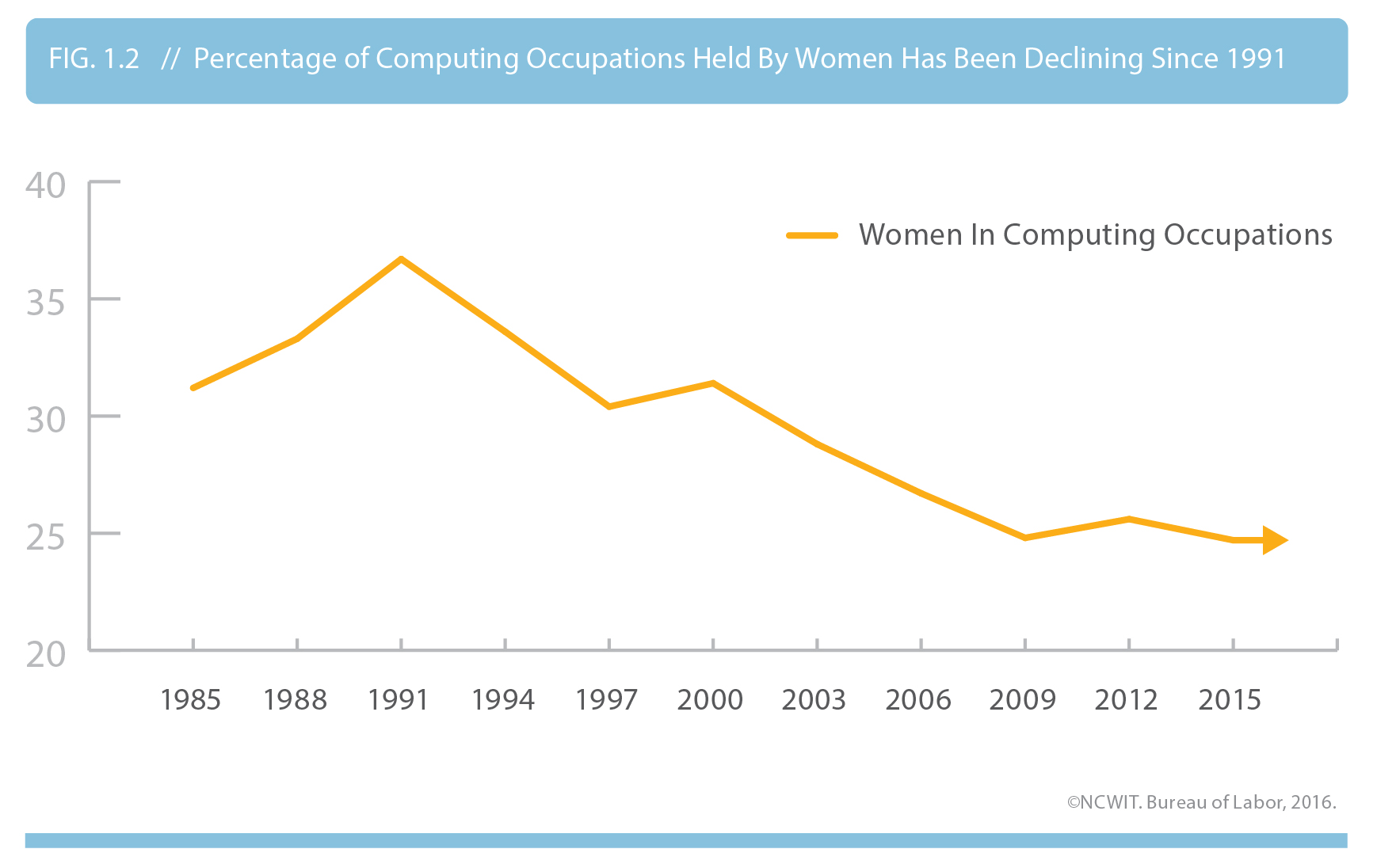Women Are Opting Out of IT, Here’s How to Bring Them Back

Jodi Goglin
Computing jobs continue to increase and offer some of the highest salaries, yet the industry is failing to attract diverse talent. The US Department of Labor estimates 1.1 million computing related job openings in the US by 2024, but with a reduced pipeline of college graduates and women continuing to leave IT jobs at a startling rate, our ability to fill them may be difficult.
Women hold a whopping 57 percent of all professional occupations, but in computing roles they only hold 25 percent of the jobs. Out of the 25 percent of women who are in computer jobs, only 14 percent are in architecture and engineering roles, and the ratio is much smaller in leadership positions and innovative roles.
The below graphs from the Bureau of Labor, 2016, show the alarming truth:
Graph 1

Graph 2

The exodus explained
The attrition rate for women in technology is more than double that of men, and half of women in IT depart the profession entirely by their thirteenth year.
In a 2016 survey of technical women, most who had left IT jobs named the nature of their workplace as a central factor. They described poor prospects for development and advancement, inadequate support, exclusion from innovative roles, unequal pay, and a lack of flexibility to help them (and their male co-workers) balance work and personal responsibilities.
The IT job titles that women hold most frequently are project manager and business analyst; men are most often software engineers or systems administrators. Technical women, in other words, are often channeled into “execution” roles, which can limit their ability to innovate or make significant contributions.
We need women in IT
Research has shown that teams equally balanced between men and women were more innovative and efficient. Diverse teams improve creativity, problem-solving, and productivity and provides companies with larger talent pools. Simply put, without women in IT, companies are only accessing 43 percent of the potential talent pool.
Implicit bias can blind management to highly-qualified associates, create workforce churn, and discourage women who stay from voicing their best ideas. Plus, it can hinder communication with female clients.
How to retain your female workforce
Begin with an honest look at potential bias in your workplace, and then set goals and strategies. These could include:
- Development. Build programs to train and grow female associates that leverage their technical and innovative skillsets. Give them opportunities to grow and thrive.
- Job Roles. Assess the projects women are being assigned to. Are women only in execution roles vs. creative and innovative roles? Give women a seat at the table in contributing strategic development of key products and business goals.
- Recognition. Appreciate contributions and make a point to highlight accomplishments of women as much as men.
- Recruitment and hiring. Post your job openings with gender neutral descriptions. Check that you are not excluding women with potentially unwelcoming ads. Seek a 50/50 split of applicants, male to female. Use mixed-gender interview teams and present a professional atmosphere.
- Retention & advancement. Evaluate performance on an equal and objective basis; women are too often judged on personality. Provide constructive feedback and clear yet challenging goals to maximize associate development.
Remember: of the great number of women who leave IT, most said they would have stayed if the IT workplace was an equal landscape. There are many things we can all do as employers to retain and attract women in IT and improve diversity in the workplace. Can your company afford not to?
Social Share
Don't miss the latest from Ensono
Keep up with Ensono
Innovation never stops, and we support you at every stage. From infrastructure-as-a-service advances to upcoming webinars, explore our news here.
Blog Post | April 16, 2025 | Industry trends
Closing the Cloud Skills Gap with Engineering Talent that Flexes with You
Blog Post | April 8, 2025 | Technology trends
IBM z17: The Age of AI on The Mainframe Has Arrived. Are You Ready to Meet It?
Blog Post | March 19, 2025 | Industry trends